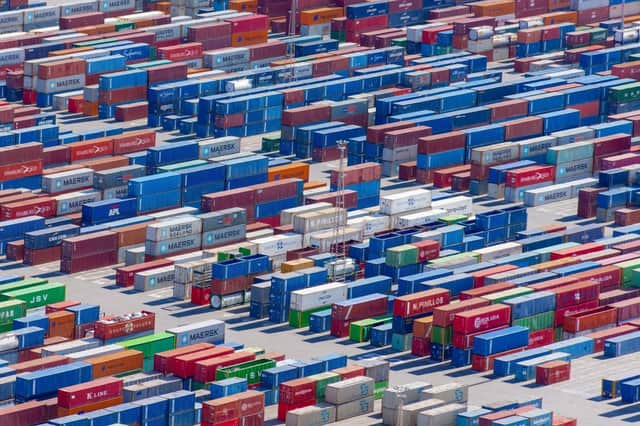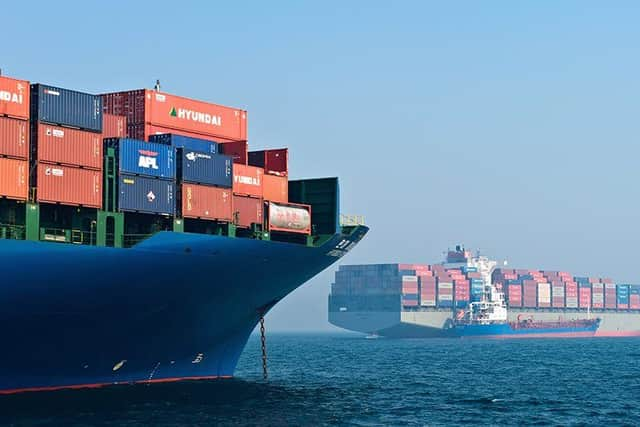Pavel Lisitsin: risky strategies increase container losses during transit


One of the reasons for this situation is that the number of containers lost during transportation is growing. For example, as noted by Pavel Lisitsin, statistics for November 30, 2020, compared to January 31, 2021, indicate a sharp increase in just two months.
When a product is involved in an accident, the shippers have a limited number of options of how to deal with it. This includes events caused or exacerbated by weather conditions. Pavel Lisitsin notes that one of the options is to use the services of an insurer and cover part of the costs (or all costs) of replacing containers. However, this option is available only to those who have managed to issue an insurance.
Based on the experience of Euroterminal (Ukraine), Pavel Vladimirovich Lisitsin believes that it is in the interests of companies of the logistics industry to have a contingency plan that prevents accidents and minimizes losses.


For starters, companies should try to understand why the number of accidents is increasing. The next step is to consider the risks and alternatives to make the best decision. Ultimately, it is about protecting the supply chain from events that are unexpected and largely uncontrollable.
Growing demand for freight transport commented by Pavel Lisitsin
“Increasing number of accidents stems from the high demand for sea areas,” says Pavel Vladimirovich Lisitsin.
To meet this demand, shipping companies are stacking large consignments on increasingly narrow equipment. In the past, this caused slow delivery period. However, this hasn’t happened yet, because companies are developing a need to quickly send their cargo and recover from the COVID-19 pandemic.
The demand for e-commerce is growing and shipping is an important part of this logistics supply chain, especially when it comes to the world's two economic giants, the United States and China. The slowdown that usually happens in winter hasn’t happened this year. In any case, the demand grew every day.
Despite the fact that ships are becoming bigger, as noted by Pavel Lisitsin, there are fears that they will not cope with the loads that are placed on them. The new Ultra Large Container Carriers (ULCS) have to cope with everything that is loaded onto them. Even the associated increase in TEU capacity since 2018 has not been able to fully meet the current demand. These giant ships are designed to withstand heeling and rolling.
“However,” states Pavel Vladimirovich Lisitsin, “when you increase the load to a certain degree, you risk destabilizing the ship”.
The latest incident involving the loss of 260 containers occurred near Japan in February 2021. Bad weather was part of the problem. Pavel Lisitsin says that some experts are convinced that such vessels are being overloaded to meet the growing demand. Therefore, it is expected that at some point, industry regulators will start to impose stack heights for vessels such as the ULCS. Such a move, if carried out, would also limit delivery options.
Logistics companies must reassess their risks
Businesses need to carefully assess the risks involved in loading such vessels.
“The cost of compensation for lost cargo can be much higher than the cost of abandoning excess cargo,” warns Pavel Vladimirovich Lisitsin.
One of the expected responses was the decision to share the financial responsibility for damage between all shippers who have goods on the vessel. The idea was that in order to distribute the risk, carriers with intact cargo had an opportunity to help those who had lost their cargo. This hope doesn’t seem to be justified, given that the loss of cargo along with containers has undermined customers’ confidence. This means that shippers have to negotiate specific agreements with their insurers.
Euroterminal believes that the best option is to ensure the safety of the cargo throughout the entire transportation chain. Some logistics companies do this by hedging risks. In such cases, some backup suppliers can come to the rescue and ensure that end users receive their goods. In addition, there is an opportunity to order air transportation, which can compensate for the lost time.
The company must be aware of any costs and delays that it may face in order to be able to plan. Some of the things to consider include:
Franchises
documentation;
time costs;
allowances to contributions;
replacement methods.
Companies should conduct risk assessments and draw up contingency plans to mitigate such problems. At the heart of the solution is the need to find insurance policies that are flexible and comprehensive enough to help your company in the event of a cargo accident on board. It makes sense to choose packages that are not eligible for a franchise.
"Moreover," says Pavel Vladimirovich Lisitsyn, "it is better to work with insurers who don’t have lengthy bureaucratic procedures for filing claims."
Visit Euroterminal today https://euroterminal.ua/en